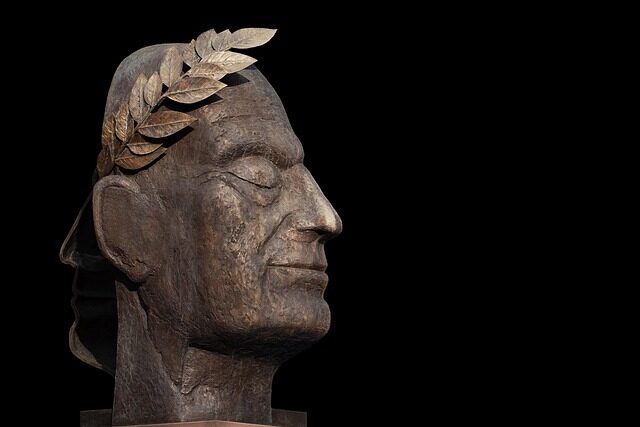The Swedish Empire, once a dominant force in European politics, has left an indelible mark on the continent’s history. From its military prowess to its cultural contributions, the story of Sweden’s rise and fall as a great power is a fascinating chapter in the annals of history.
Focusing on the Swedish empire expansion, this article delves into the empire’s territorial acquisitions, key events, and the influential monarchs who led Sweden through its golden age. Let’s embark on a journey through time to understand how the Swedish Empire shaped the Europe we know today.
- What Was the Swedish Empire?
- How Did the Swedish Empire Expand?
- What Were the Key Events During the Swedish Empire?
- Who Were the Significant Monarchs of the Swedish Empire?
- What Led To The Decline Of The Swedish Empire?
- How Did the Kalmar Union Influence the Swedish Empire?
- What Were the Cultural Achievements Of The Swedish Empire?
- What Were the Territories of the Swedish Empire?
- What Role Did the Thirty Years’ War Play in the Swedish Empire?
- Who Were the Main Competitors of the Swedish Empire?
- How Did the Swedish Empire Influence European Politics?
- What Is the Legacy of the Swedish Empire Today?
- What Was the Swedish Empire?
- How Did the Swedish Empire Expand?
- What Were the Key Events During the Swedish Empire?
- Who Were the Significant Monarchs of the Swedish Empire?
- What Led To The Decline Of The Swedish Empire?
- How Did the Kalmar Union Influence the Swedish Empire?
- What Were the Cultural Achievements Of The Swedish Empire?
- What Were the Territories of the Swedish Empire?
- What Role Did the Thirty Years’ War Play in the Swedish Empire?
- Who Were the Main Competitors of the Swedish Empire?
- How Did the Swedish Empire Influence European Politics?
- What Is the Legacy of the Swedish Empire Today?
What Was the Swedish Empire?
The Swedish Empire, also known as Stormaktstiden or the Era of Great Power, was a period of significant growth and influence for Sweden in the 17th and early 18th centuries. It saw Sweden transforming from a modest kingdom in the Baltic into one of the most formidable states in Europe.
The empire’s territorial expanse included regions around the Baltic Sea and parts of Northern Germany, places that were key to controlling Baltic trade routes. The Swedish Empire was not only a military force to be reckoned with but also a beacon of cultural and scientific progress.
Sweden’s imperial ambitions were underpinned by shrewd political maneuvers and significant military victories, laying the groundwork for a vast northern empire that would influence European politics for over a century.

How Did the Swedish Empire Expand?
The Swedish empire expansion is a tale of strategic marriages, alliances, and, most importantly, military successes. The empire’s growth can largely be attributed to its participation in the Thirty Years’ War under the command of King Gustavus Adolphus, often regarded as one of the greatest military commanders of all time.
With a modernized army and innovative tactics, the Swedish forces won several key battles that expanded their influence and territories. The empire strategically gained control over territories vital for trade and defense, effectively securing its position as a major power in Northern Europe.
Sweden’s involvement in regional conflicts and treaties like the Peace of Westphalia further cemented its status, leading to substantial territorial gains across the Baltic region and into the Germanic states.
What Were the Key Events During the Swedish Empire?
Several pivotal events characterized the era of the Swedish Empire. The Thirty Years’ War, which saw Sweden as a major Protestant force, was crucial in establishing its power. Later, the Great Northern War would be a defining conflict, pitting Sweden against a coalition of Russia, Denmark-Norway, and Saxony-Poland.
Despite initial successes, the Great Northern War ultimately led to significant losses for Sweden and marked the beginning of the empire’s decline. Other notable events included various treaties and battles that shaped not only the empire’s borders but also the political landscape of Europe.

- Victory at the Battle of Breitenfeld (1631)
- The Treaty of Roskilde (1658)
- The establishment of absolute monarchy under King Charles XI
- Defeat at the Battle of Poltava (1709)
- The Treaty of Nystad (1721), concluding the Great Northern War
These events collectively contributed to the rise and fall of the Swedish Empire, leaving an indelible impact on its history.
Who Were the Significant Monarchs of the Swedish Empire?
The Swedish Empire was shaped by a series of powerful and influential monarchs, each leaving their mark on the nation’s legacy.
King Gustavus Adolphus, also known as Gustav II Adolf, was a key figure in the empire’s military triumphs. His innovative tactics and leadership during the Thirty Years’ War significantly expanded Swedish territory and influence.
Following him, Queen Kristina, who came to the throne as a child, led Sweden into a period of peace and cultural advancement before her abdication. Charles XI and Charles XII, father and son, were also significant rulers who impacted the empire’s trajectory, with the latter’s aggressive military campaigns ultimately leading to its downfall.
What Led To The Decline Of The Swedish Empire?
The decline of the Swedish Empire was a result of a combination of factors, including military overextension, economic strain, and the rise of rival powers. The catastrophic defeat at the Battle of Poltava during the Great Northern War marked the beginning of the end for Sweden as a great power.

Subsequent wars drained Swedish resources and morale, leading to lost territories and diminished influence. Internally, political changes also signaled a shift away from imperial ambitions, as the nation began to focus more on domestic reforms and stability.
By the Treaty of Nystad, Sweden ceded significant territories, and the era of the Swedish Empire as a major European power came to an end, marking a turning point in Northern European history.
How Did the Kalmar Union Influence the Swedish Empire?
The Kalmar Union, which united the Scandinavian kingdoms under a single monarch, played a significant role in Sweden’s earlier history. It laid the groundwork for future conflicts and power struggles that would influence the trajectory of the Swedish Empire.
With the eventual dissolution of the union, Sweden asserted its independence and began its journey towards becoming a great power. The end of the Kalmar Union allowed Sweden to pursue its imperial ambitions without the constraints of a multi-kingdom alliance.
What Were the Cultural Achievements Of The Swedish Empire?
The Swedish Empire was not only known for its military achievements but also for its contributions to culture and the arts. The period saw a flowering of cultural advancements during the Swedish empire, including:

- The founding of the Swedish Academy
- Architectural developments like the construction of the Drottningholm Palace
- Advances in science and education with the establishment of universities and scholarly societies
- Promotion of literature, art, and music
These cultural achievements reflected the empire’s prosperity and are celebrated as part of Sweden’s rich historical heritage.
Delving deeper into the history and impact of the Swedish Empire, let’s take a look at this insightful video that brings to life the empire’s legacy:
What Were the Territories of the Swedish Empire?
The Swedish Empire’s territories included modern-day Sweden, Finland, Estonia, Latvia, and parts of Norway, Germany, Poland, and Russia. Its control over these areas allowed it to dominate the Baltic region and exert influence over trade and politics.
What Role Did the Thirty Years’ War Play in the Swedish Empire?
The Thirty Years’ War was a turning point for the Swedish Empire, establishing it as a major military power. Sweden’s intervention on behalf of the Protestant cause and the subsequent territorial gains significantly expanded its influence.

Who Were the Main Competitors of the Swedish Empire?
Sweden’s main competitors included Denmark-Norway, Poland-Lithuania, and Russia, each vying for control over the Baltic region and its lucrative trade routes.
How Did the Swedish Empire Influence European Politics?
Through its military campaigns and alliances, the Swedish Empire played a key role in shaping the political landscape of Europe, particularly in Northern Europe and during the Thirty Years’ War.
What Is the Legacy of the Swedish Empire Today?
Today, the legacy of the Swedish Empire can be seen in its cultural contributions, historical sites, and the shaping of national borders in Northern Europe. The empire’s influence remains a significant chapter in European history.

